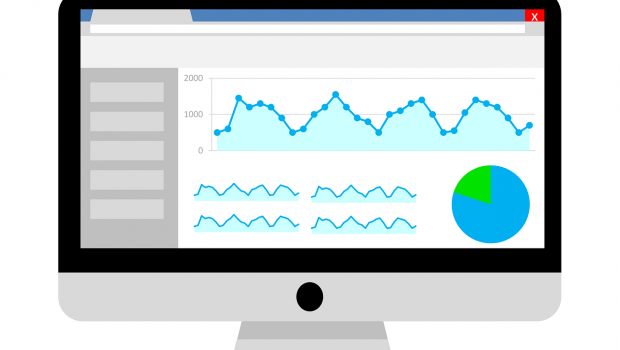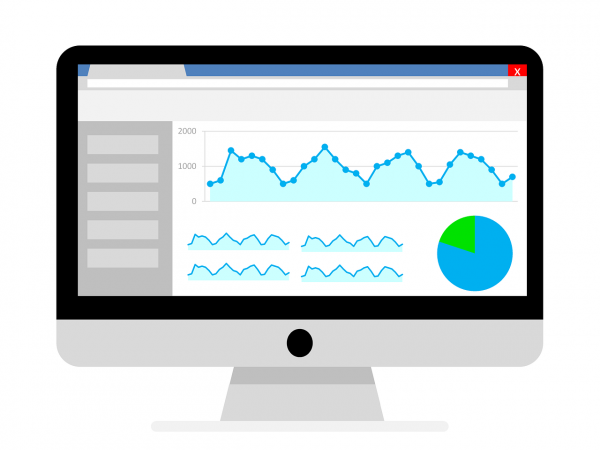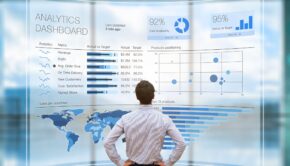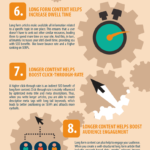Current Trends in Predictive Analytics
Predictive analytics has been making waves in the business sector in the past decade — and for good reason. While the thought of regularly relying on predictive analytics to help your business make informed decisions would have seemed like something out of science fiction at the turn of the century, predictive analytics are widely used today. Staying up to date on current trends in predictive analytics is essential to maintaining an edge in the business world.
Image Source: Pixabay
Decision-Making and Predictive Analytics
Big data is here to stay, and an increasing number of companies of all sizes have begun reaping the rewards of analytics. The analysis of massive data sets yields insights and meaningful, actionable information for anyone willing to spend the time to look. As more and more of this data is processed and patterns are discovered, the ability for predictive analytics to make an impact increases steadily.
While data collection is no longer a problem to companies, the analysis of that data can still pose a bit of a challenge. Predictive analytics can empower decision-making in a huge variety of fields, including manufacturing, retail, energy, health insurance, banking, and even the government and private sectors at large. Predictive analytics has the potential to increase the overall potential captured value across many industries, and while many companies are reticent to adopt predictive analytics due to a lack of confidence or trust, its benefits outweigh any potential risk.
Predictive analytics can make for better decision-making, from the largest decisions down to the seemingly trivial. Predictive analytics can help a retail business decide how many fabric-color combinations they should provide in their stores, which items should always be in stock, and even the layout of the store itself in order to maximize profits. Overall, predictive analytics helps a business make better decisions because it helps them to understand the bigger picture in how their customers behave and react in various situations.
Predictive Analytics and Customer Lifetime Value
Data insights can boost business growth in a variety of ways, increasing overall business intelligence and making marketing efforts as efficient and targeted as possible. Predictive analytics are just one more way that data can positively impact an industry, acting as close to a crystal ball as we’re likely to see in our lifetimes. Putting all of these together can seriously boost customer lifetime values for any business in any sector.
Customer lifetime value (CLV) measurements are important because they tell a business how much capital they can expect to get out of any given customer over their time exchanging money for goods or services. Figuring out the CLV means that you can engage in more targeted and personalized customer acquisition efforts, increasing efficiency and reducing overall costs. Additionally, understanding CLVs allows businesses to increase customer retention rates, which increases profit over time.
The banking, media, insurance, telecommunication, and e-commerce industries can all benefit greatly from using predictive analytics to glean CLVs. Machine learning models can quickly estimate the gross future income any given customer will generate, giving companies an added edge over their competition. Ideally, predictive analytics will help various industries understand their customers better, allowing them to provide better service. This is beneficial to both consumers and companies alike.
Examples of Business Analytics Applications
Data scientists are already bringing their skills to many different industries, positively impacting them in a lasting way. The healthcare field has found data analysis to be crucial to its ongoing development, as wearable tech can give real-time data collection that can help diagnose and treat various diseases and ailments. In the cybersecurity field, machine learning algorithms spot suspicious behavior and malicious software before they have the chance to harm vital information systems and data.
Business intelligence is vital to the modern, highly competitive business world. Lowe’s, Starbucks, Amazon, and Amex are all highly invested in making sense of their massive collections of data, and they rely on analytics to help them improve services and predict possible future setbacks. Analytics can also help to overhaul and optimize a business’s supply chain from the ground up, saving astronomical amounts of money over time and increasing overall efficiency and speed within a company.
There is no doubt that the implementation of successful business analytics can boost a company’s profits and overall visibility. Huffington Post used business analytics to become one of the most visited news sites in the United States, and the news organization continues to reap the rewards as other media companies falter around them. Business intelligence and predictive analytics can help companies make better decisions, save money, determine the best opportunities for new investments, and track overall performance.
At the end of the day, the main function of predictive analytics is to improve how a business operates. While it can seem on the surface like that is exclusively beneficial to the business itself, the improvements will almost always translate into a better experience for the customer as well. Predictive analytics are just one arm of a new cadre of big data-related applications that are changing the business and technology worlds as we know it.








![Why Every Weekend Should Be A 3 Day Weekend, According To Science [Infographic]](https://technofaq.org/wp-content/uploads/2017/06/why-every-weekend-should-be-a-3-day-weekend_infographic-150x150.png)








